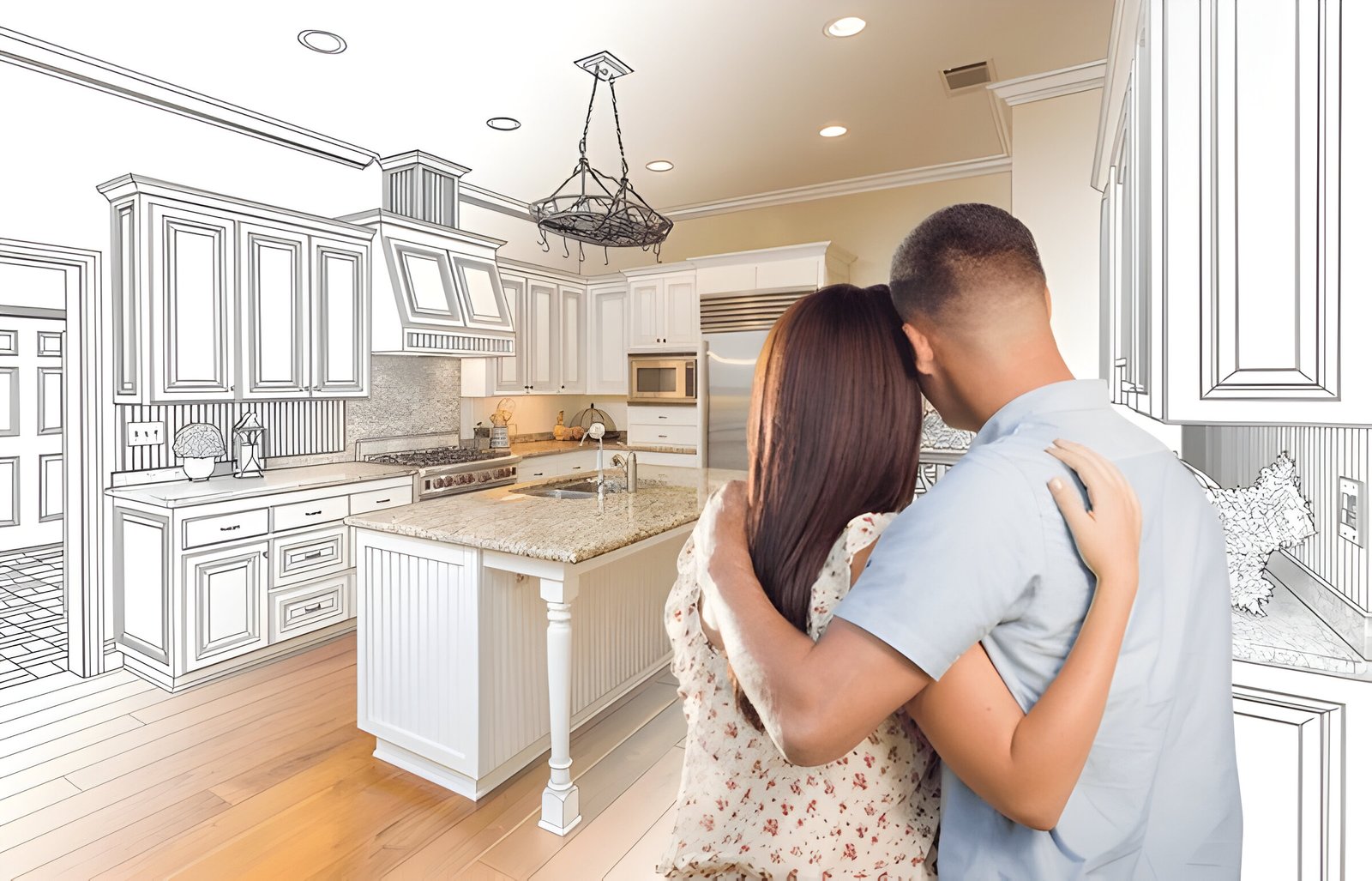The kitchen is the heart of any home, where families gather, meals are prepared, and memories are made. Custom kitchen design has emerged as a popular trend, allowing homeowners to create their dream kitchen tailored to their unique needs and preferences. With countless options for layout, appliances, and finishes, designing a custom kitchen can be both exciting and overwhelming.
Creating a custom kitchen involves careful planning, from selecting the perfect layout to choosing the right appliances and adding personal touches. This article will explore essential tips for designing a dream kitchen, including considerations for kitchen cabinet design, countertops, and color palettes. We’ll also delve into the importance of proper plumbing and electrical work, as well as the benefits of using kitchen design tools and software to bring your vision to life. By following these guidelines, homeowners can transform their kitchen into a functional and beautiful space that reflects their style and enhances their daily lives.
Planning Your Dream Kitchen
Setting a Realistic Budget
Creating a realistic budget is crucial for a successful kitchen remodel. Homeowners should begin by defining their goals and priorities for the renovation. This includes determining whether they want to create a more open layout, upgrade appliances, or enhance storage solutions. Researching costs associated with materials, labor, appliances, and fixtures is essential to understand the investment required. It’s advisable to allocate a contingency fund of 10-20% of the total budget to account for unexpected expenses.
Creating a Functional Work Triangle
The kitchen work triangle is a design concept that aims to make the kitchen more efficient and ergonomic. It connects the three main working areas: the cooker, sink, and refrigerator. To optimize workflow, the total perimeter of these areas should be between 13 and 26 feet, with each leg measuring 4 to 9 feet. This arrangement minimizes movement and enhances functionality during meal preparation.
Considering Traffic Flow
Proper traffic flow is essential for a comfortable and safe kitchen environment. Walkways should be at least 36 inches wide, while work aisles in front of appliances and prep areas should be 42 to 48 inches wide. For larger families or those who entertain frequently, work aisles up to 54 inches wide may be beneficial. It’s important to avoid placing major appliances directly opposite each other to prevent traffic jams during simultaneous use. Additionally, keeping appliances away from corners ensures full access and prevents cabinet doors from being blocked when appliances are open.
Choosing Appliances and Fixtures
Energy-Efficient Appliances
When selecting appliances for a custom kitchen design, energy efficiency is a key consideration. Energy Star® certified appliances can significantly reduce energy usage and environmental impact. For refrigerators, models with bottom freezers and LED lighting tend to be more energy-efficient. Dishwashers with advanced washing and drying features, as well as bulk-dispense technology, can save both energy and water. Induction cooktops are the most energy-efficient cooking option, transferring electromagnetic energy directly to the pan and reducing cooking times.
Lighting Options
Proper lighting is crucial in a kitchen, contributing to both functionality and ambiance. A combination of natural lighting, task lighting, and ambient lighting creates a well-illuminated space. Under-cabinet lights can provide extra illumination for prep areas, while pendant lights or chandeliers over islands or dining areas add style and focused light. LED bulbs are an energy-efficient choice for all lighting fixtures. Dimmer switches allow for adjustable lighting to suit different moods and activities.
Sink and Faucet Selection
The sink and faucet are central to the kitchen’s functionality. Undermount sinks offer a seamless look and easy cleanup, while farmhouse sinks provide a deep basin for handling large items. For faucets, consider options like pull-down sprayers for flexibility or touchless models for improved hygiene. The finish of the faucet should complement the overall kitchen design, with popular choices including chrome, brushed nickel, and matte black. When selecting a sink and faucet, ensure they match in style and proportion to create a cohesive look in the custom kitchen design.
Adding Personal Touches to Your Kitchen Design
Color Schemes and Accents
Color plays a crucial role in creating the desired atmosphere in a custom kitchen design. Homeowners can choose from various color schemes to reflect their personal style and evoke specific emotions. For a sleek, contemporary look, a monochromatic color scheme in grays, blacks, or whites works well. An all-white kitchen with stainless steel accents is a popular modern choice. Traditional kitchens benefit from warm, cozy colors like cream, tan, light yellow, or light blue. For a cottage feel, pale sage green is an excellent option.
To add visual interest, homeowners can incorporate the 60-30-10 rule, using a dominant color for 60% of the space, a secondary color for 30%, and an accent color for 10%. This creates depth and balance in the kitchen design. Accent pieces such as rugs, towels, artwork, and small appliances can introduce pops of color without overwhelming the space.
Decorative Hardware
Choosing the right hardware is essential for adding personal touches to a kitchen design. The style of hardware should complement the overall kitchen esthetic. For contemporary kitchens, clean lines and streamlined modern hardware are appropriate. Traditional kitchens benefit from hardware with more curves and details, such as cup pulls or bin pulls.
When selecting hardware, homeowners can mix knobs and pulls for a balanced look. Generally, knobs are placed on doors and pulls on drawers, but this is not a strict rule. The finish of the hardware should also be considered, with options including brass, gold, polished nickel, chrome, and black. Mixing metals within the room is acceptable, but it’s best to stick to one finish for all hardware pieces.
Unique Design Elements
To create a truly personalized kitchen, homeowners can incorporate unique design elements that reflect their tastes and interests. Adding a focal point, such as a custom-designed range hood or a unique backsplash, can create a stunning centerpiece. Artistic lighting fixtures can serve both functional and esthetic purposes, complementing the overall kitchen design.
Incorporating natural elements like live edge wood countertops or stone accent walls can bring an organic feel to the space. Open shelving provides an opportunity to showcase well-designed kitchenware, turning everyday items into art pieces. For those who enjoy art, carefully chosen paintings or sculptures can add personality and creativity to the kitchen, provided they are durable and resistant to heat and moisture.
Conclusion
Custom kitchen design has a significant impact on creating a space that’s both functional and visually appealing. By taking into account factors such as budget, layout, appliances, and personal touches, homeowners can transform their kitchens into the heart of their homes. The tips outlined in this article provide a solid foundation to begin the journey of designing a dream kitchen that caters to individual needs and preferences.
To wrap up, the process of custom kitchen design involves careful planning and consideration of various elements. From choosing energy-efficient appliances to selecting the right color scheme and decorative hardware, each decision plays a crucial role in shaping the final outcome. By paying attention to these details and incorporating unique design elements, homeowners can create a kitchen that not only meets their practical needs but also reflects their personal style and enhances their daily living experience.
FAQs
1. What are the steps to designing the kitchen of your dreams?
To design your dream kitchen, begin by listing all the elements you wish to include. Create a comprehensive plan of the kitchen’s floor and walls, and decide on the most functional layout. Research suitable appliances and fixtures, plan for ample storage, and gather various design ideas. Finally, choose a harmonious color scheme and make your selections for materials and finishes.
2. What should be considered when planning a kitchen design?
When designing a kitchen, it’s important to consider several key factors:
- Layout: Start with determining the layout before delving into other details.
- Storage: Ensure there is adequate storage based on your needs.
- Lighting: Proper lighting is crucial for both functionality and ambiance.
- Flooring: Choose flooring that is durable and easy to clean.
- Ventilation: Good ventilation is essential to maintain air quality and remove odors.
3. How can you incorporate feng shui into your kitchen design?
To design a kitchen with feng shui principles, aim to balance the five elements and strategically place your stove to attract positive energy. Declutter the space to allow a free flow of energy, consider using glass cabinet doors to maintain an open feel, and add artwork to enhance the environment. Use colors thoughtfully to connect all elements harmonically.
4. How do you create a personalized kitchen layout?
To design your own kitchen layout, start by making a list of all desired features. Consider the overall layout and draw a detailed floor plan. Look for design inspiration and choose appropriate materials for the kitchen. Select a color scheme for the cabinets, decide on suitable worktops, and choose flooring and tiles that complement the overall design.











